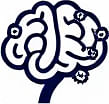Mental Models in User Experience Design
 by Shanie Goodwin
by Shanie Goodwin
Mental models help shape effective UX design by bridging user thoughts and digital interactions. This article examines how these cognitive tools improve interfaces, offering practical strategies for designers to create intuitive experiences that boost satisfaction and efficiency.

Mental models serve as essential frameworks that guide how people interact with technology. In UX design, these internal representations of reality allow creators to anticipate user behavior and build more intuitive systems.
People rely on mental models to make sense of their surroundings. For instance, when using a website, users draw from past experiences to navigate features. This connection between cognition and design makes mental models a key element in creating seamless digital products.
One way mental models influence UX design is through simplicity. By aligning interfaces with common expectations, designers can reduce confusion and enhance usability. Consider how a shopping app mirrors real-world store layouts; this approach helps users complete tasks faster.
In practice, designers often start by mapping out user mental models. They gather insights through interviews and observations to identify patterns. This process ensures that the final product resonates with real user habits, leading to higher engagement.
The Role of Cognitive Development in UX
Cognitive development plays a significant part in how mental models evolve. As individuals grow, their mental frameworks become more complex, affecting their interactions with technology. In UX design, this means considering different user groups, such as younger audiences who may have distinct expectations from digital tools.
For example, mobile apps for education often incorporate mental models based on familiar game mechanics. This strategy makes learning feel natural and enjoyable, encouraging repeated use.
To apply this effectively, designers can use techniques like prototyping. By testing early versions with users, they refine elements that do not match expected mental models. Such adjustments prevent frustration and promote positive experiences.
Practical Applications in Business Strategies
In business contexts, mental models offer advantages for user experience. Companies use them to develop products that align with customer needs, fostering loyalty and growth. A well-designed e-commerce site, for instance, anticipates user paths and streamlines checkout processes.
Lists can help organize these ideas:
- Identify core user goals through research.
- Sketch interfaces that reflect familiar patterns.
- Iterate based on feedback to align with mental models.
This method not only improves satisfaction but also drives measurable outcomes, like increased conversion rates.
Challenges and Solutions
While mental models are beneficial, mismatches can occur. If a design assumes incorrect user assumptions, it may lead to errors. Addressing this requires ongoing testing and refinement in UX design.
Solutions include creating user personas that represent diverse mental models. These profiles guide decisions and ensure inclusivity across different backgrounds.
Another approach involves visual cues that reinforce expected behaviors. For instance, using standard icons for actions like saving or sharing helps users feel confident in their choices.
Integrating Mental Models with Psychology
Psychology provides insights into how mental models form and change. In user experience, understanding principles like perception and memory allows designers to craft more effective interfaces.
For example, limiting options on a screen can leverage working memory constraints, making decisions easier. This psychological awareness leads to designs that feel effortless and rewarding.
Professionals in fields like psychology and design often collaborate to explore these intersections. Their combined efforts result in innovative solutions that enhance cognitive fit.
Building Better Habits Through Design
Mental models also support habit formation in UX design. By designing for repetition, such as through reminders or progress trackers, users can build routines around apps.
This aspect is particularly useful in health or productivity tools, where consistent use leads to better outcomes. Designers achieve this by ensuring interactions align with natural user flows.
In summary, incorporating mental models into UX design creates products that are intuitive and effective. By focusing on user cognition, designers can produce experiences that meet real needs and encourage ongoing engagement.
Through thoughtful application, these concepts continue to shape the future of digital innovation, benefiting curious minds and professionals alike.
